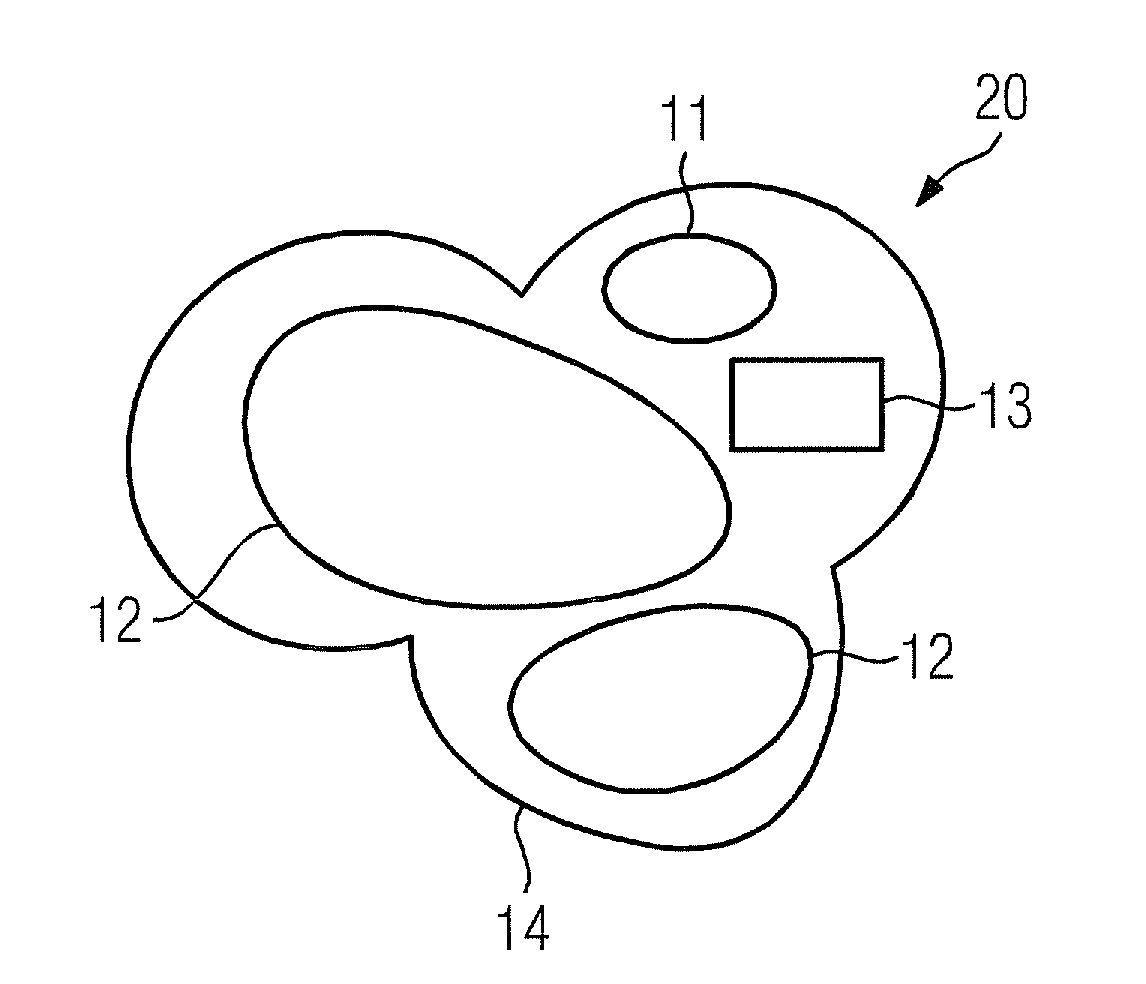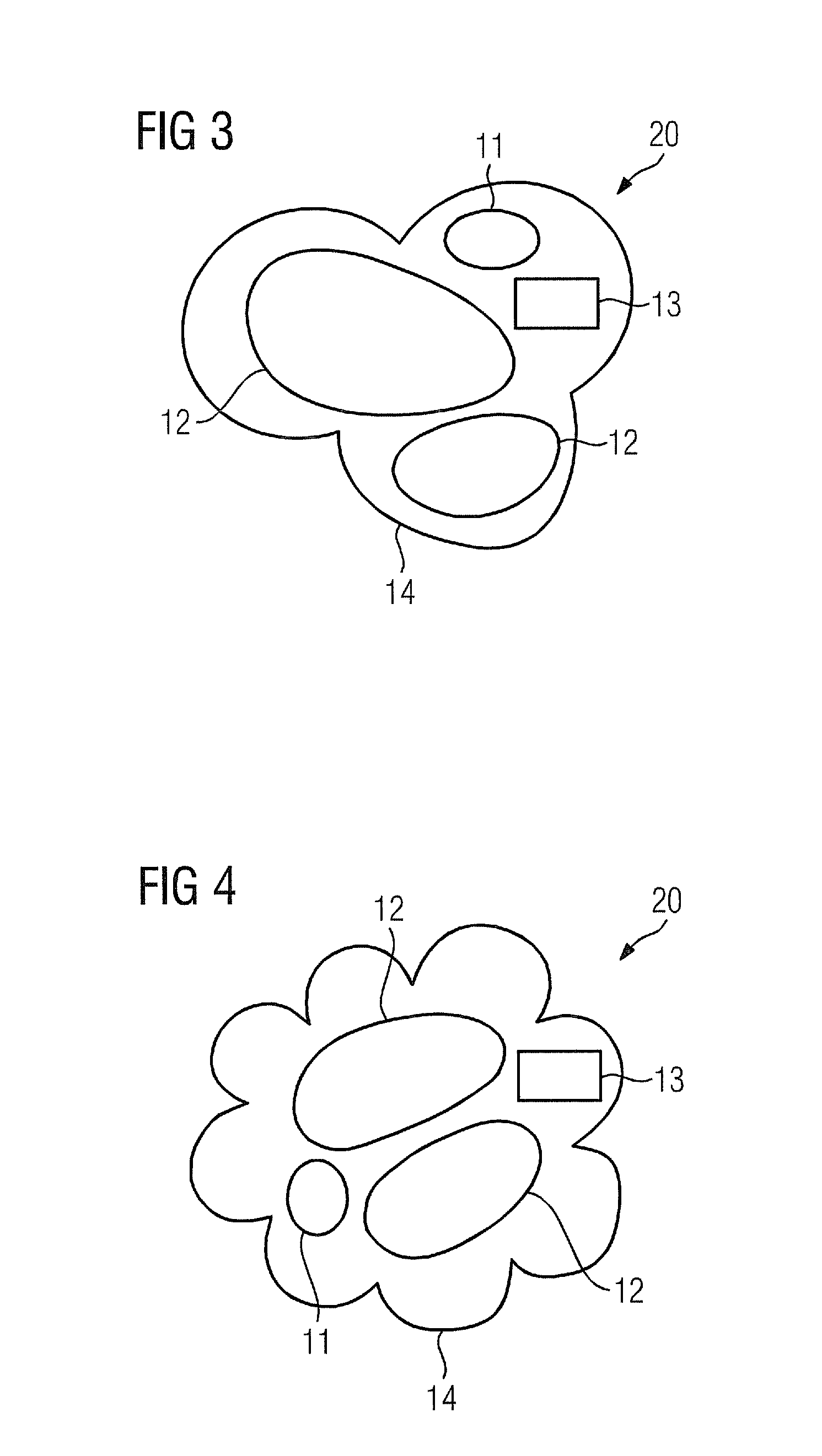Magnetic nanoparticle and group of nanoparticles
a nanoparticle and magnetic nanoparticle technology, applied in the field of magnetic nanoparticles and nanoparticles, can solve the problems of inability to regenerate myocardial muscle tissue that is already dead (necrotic tissue), and total occlusion of coronary arteries,
- Summary
- Abstract
- Description
- Claims
- Application Information
AI Technical Summary
Benefits of technology
Problems solved by technology
Method used
Image
Examples
Embodiment Construction
[0020]FIG. 1 shows an inventive nanoparticle 10, which has a magnetic core element 11, an x-ray contrast agent 13, stem cells 12 and an envelope 14. The magnetic core element 11 is for example arranged in the center of the nanoparticle 10 and is formed for example from ferric oxide (Fe2O3) or ferrous oxide (Fe3O4); other magnetic materials are also possible. The envelope 14 encloses in particular the core element 11 as well as the x-ray contrast agent 13 and the stem cells 12 and is embodied to be bioresorbable—in other words it dissolves in the body of a living being. To this end the envelope is for example found from a polymer or a polyethyleneglycol or a polyacrylate or a polyoxide. The x-ray contrast agent 13 possesses a low x-ray transparency and is preferably likewise biodegradable or at least eliminable. Iodine or barium sulfate can for example be used as an x-ray contrast agent. The nanoparticle has an average diameter of approximately 5 nm to 300 nm; preferably it is betwee...
PUM
| Property | Measurement | Unit |
|---|---|---|
| diameter | aaaaa | aaaaa |
| diameter | aaaaa | aaaaa |
| diameters | aaaaa | aaaaa |
Abstract
Description
Claims
Application Information
 Login to View More
Login to View More - R&D
- Intellectual Property
- Life Sciences
- Materials
- Tech Scout
- Unparalleled Data Quality
- Higher Quality Content
- 60% Fewer Hallucinations
Browse by: Latest US Patents, China's latest patents, Technical Efficacy Thesaurus, Application Domain, Technology Topic, Popular Technical Reports.
© 2025 PatSnap. All rights reserved.Legal|Privacy policy|Modern Slavery Act Transparency Statement|Sitemap|About US| Contact US: help@patsnap.com



